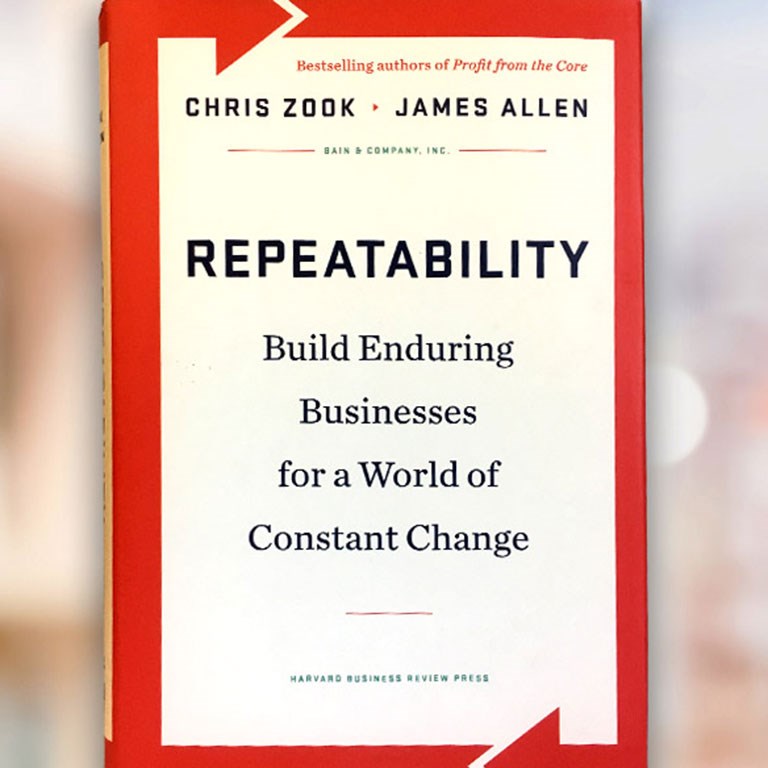Mint
How do certain companies sustain profitable growth year after year? Google, for example, has just announced plans to bid for a wireless licence to forge a new frontier.
Our recent five-year study of 1,850 companies yielded two major insights into the behaviour of companies that find profit, time and again expanding their boundaries. One: Such performance usually stems from a company expanding its core business into an adjacent space. Two: Outstanding companies consistently outgrow their rivals by developing a formula for expanding those boundaries in predictable, repeatable ways. Their numbers tell the story: The average company succeeds only 25% of the time in launching new initiatives. Yet, companies that have hit upon a repeatable formula have success rates of twice that. Some even attain rates of 80% or higher. Companies that master repeatability work within any number of adjacencies. Some make repeated geographic moves, as Vodafone has done in expanding from one geographic market to another over the past 13 years. Others apply a superior business model to new segments. During its long growth spell, for instance, Dell repeatedly adapted its direct-to-customer model to new customer segments and new product categories.
In other cases, companies develop hybrid approaches. Nike expanded into adjacent customer segments, introduced new products, developed new distribution channels, and then moved into adjacent geographic markets. The first time Nike did this, it undoubtedly struggled with the inherent complexity, but as it repeated the process again and again, managers learned to execute consistently.
Successful repeaters in our study had two common characteristics. First, they were extraordinarily disciplined, applying rigorous screens before making an adjacency move. This discipline paid off in the form of learning-curve benefits, such as sharper strategic clarity, increased speed, lower complexity and better decision-making. And second, in almost all cases, they developed their repeatable formulas by studyingtheir customers very, very carefully.
American Express, for example, based its successful expansion into adjacencies on the detailed microeconomic data on buying behaviour reflected in the millions of transactions by card users each day. With such customer information, AmEx managers have created a family of cards with varied interest rates, terms, services, and reward programmes. They found new customer segments; created new, more precisely targeted credit-card products, including rewards programmes; expanded the types of merchants where cardholders can use their cards; and sold additional services to card customers.
Google's proposed bet on fast wireless Internet service—if regulators agree to the company's proposals to require open access to those airwaves—would mean its customers could operate any device, service, software application or network on it with no restrictions. This, in turn, would open up adjacency moves to myriad service and software providers.
Executives should ask themselves whether they value repeatability highly enough, and begin discussing it in management meetings and strategy sessions. Then it's time to start practising, preferably on a small scale at the outset.
As a role model, consider Danaher Corp., once a tiny industrial tools maker that is now a diversified manufacturing and technology company. From 1987 to 1995, the company made about 1.5 acquisitions a year, averaging $80 million. Since 1995, it stepped up the rate to about six acquisitions a year, averaging $100 million each. Focusing on just five criteria, the company has grown at 16% a year—from $617 million in revenues in 1987 to $7.9 billion in 2005—and has seen its stock price rise more than 5,000%. That's the kind of repeatability you're aiming for.
Send your comments to bainsbrains@livemint.com www.livemint.com
Chris Zook is a partner with Bain & Co., director of the firm's Global Strategy Practice and best-selling author on growth strategy. His latest book, Unstoppable: Finding Hidden Assets to Renew the Core and Fuel Profitable Growth (Harvard Business School Press), was published in May 2007. Ashish Singh is managing director of Bain & Co. India.

Repeatability
Learn more about how executives use Repeatable Models® to build enduring businesses.